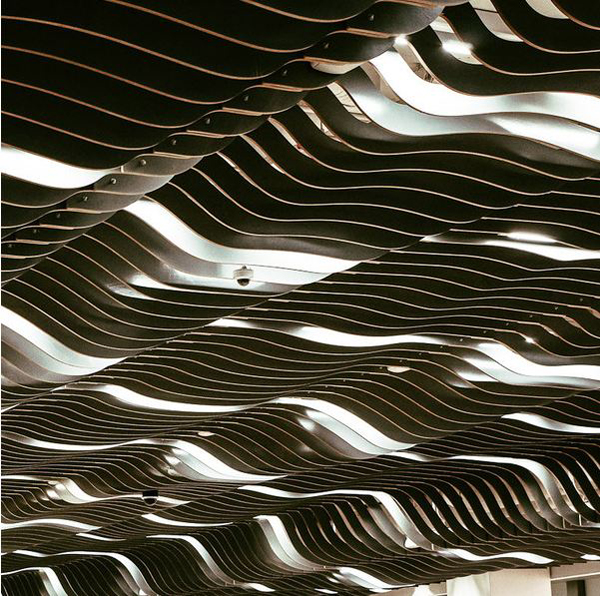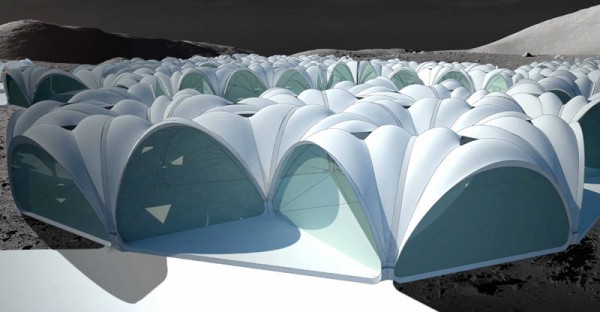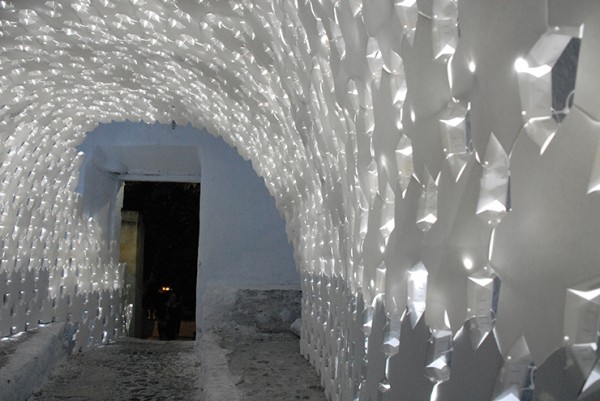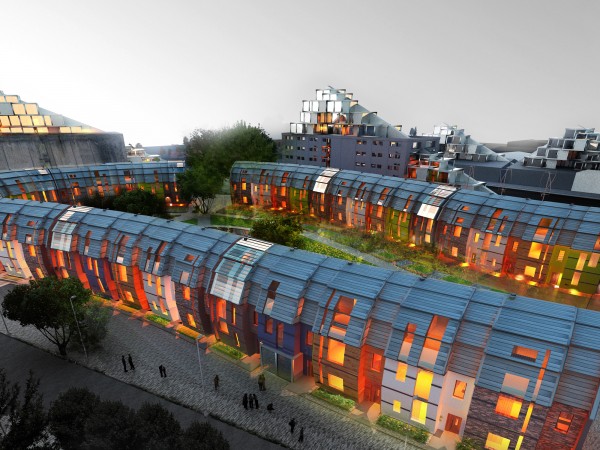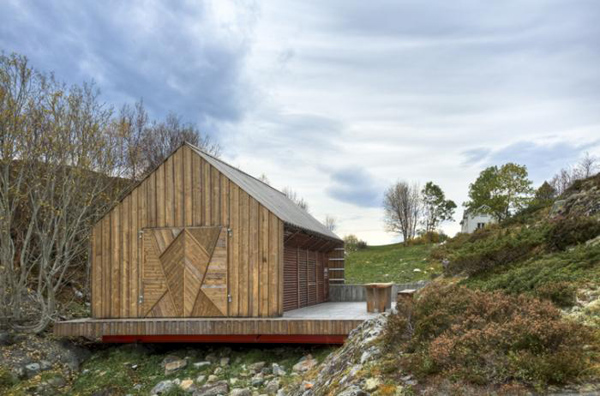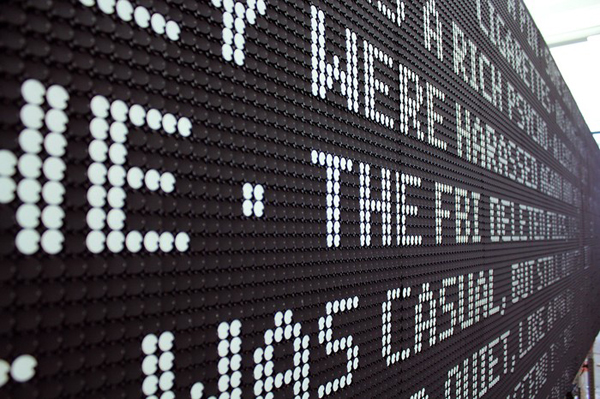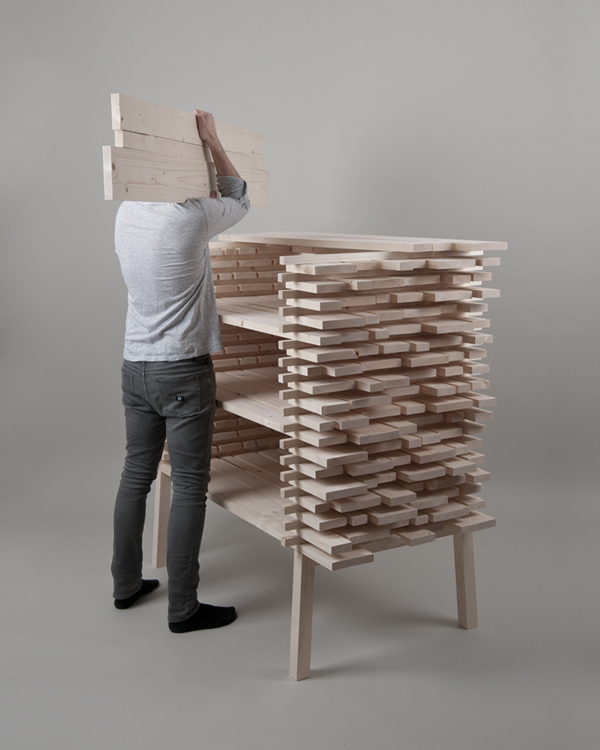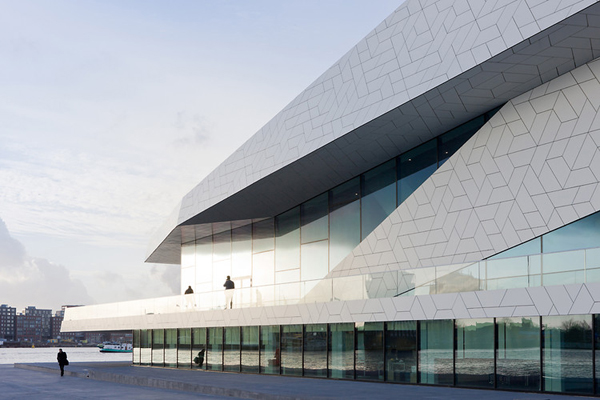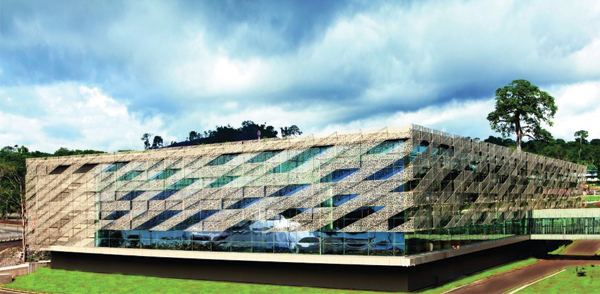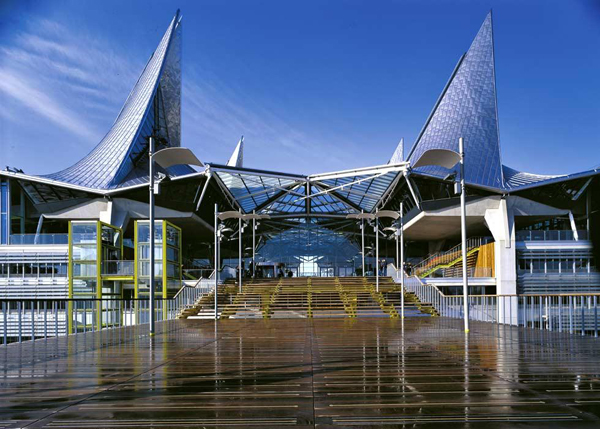The Digital Design Ceiling by ABWB & Associates is located on the top floor of the Pelli Clarke Pelli Architects-designed Costanera Center Mall in Santiago, Chile. At 300 meters tall, the Costanera Center is the tallest building in both South America and the Southern Hemisphere. The ceiling covers the mall’s central ‘Food Garden.’
Made up of undulating laser cut steel profiles, the ceiling renders a fluid, wave-like dimension to a normally-flat and boring surface. These digitally-derived profiles echo the geometries and rhythm of the Andes Mountains located just outside Santiago’s city limits, gesturing movement laterally, as well as into the horizon. They oscillate along their vertical axis, returning regularly to the level of the underlying structural fabric, where the tracks these profiles are screwed into, are revealed. Embedded within this matrix of profiles are a myriad of functional systems, including recessed lighting, heating and ventilation ducts, and security sensors and cameras. This elaborate and decorative ceiling system functions exactly like a drop-ceiling, providing both a cavity for functional systems, as well as acoustical interruption for what can often be a loud and bustling space. Read the rest of this entry »

